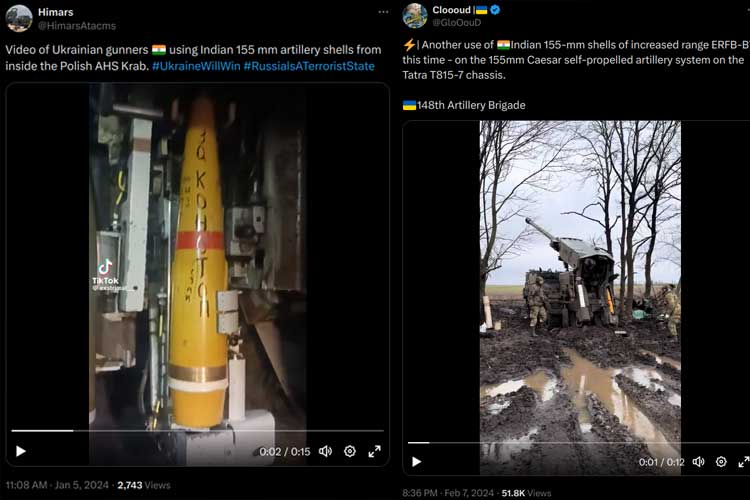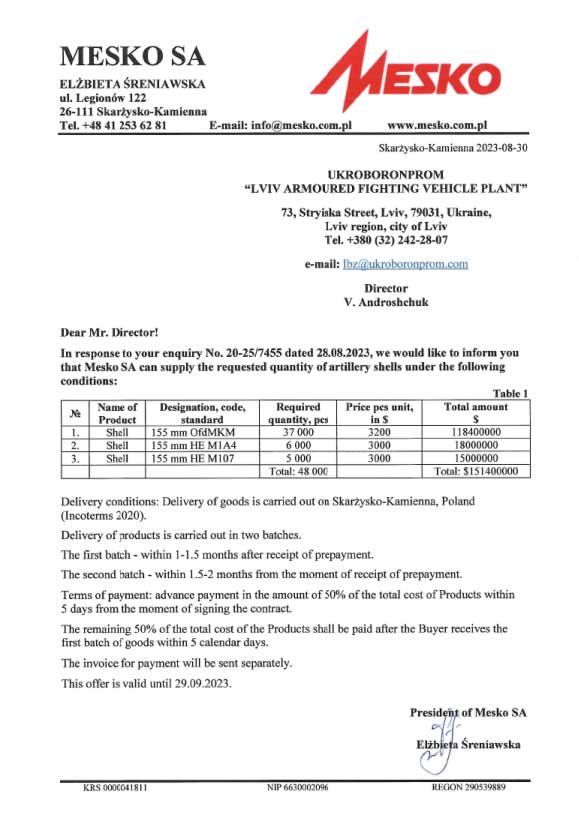
By Alan Callow
LONDON, UK: The Russian-Ukrainian conflict is beginning to drag on, and a high-intensity confrontation requires huge resources that neither side can afford on its own. Therefore, the parties are beginning to seek support from third countries. Russia prefers to focus on China, Iran and the DPRK, while Ukraine is mostly forced to rely on the United States and European countries.
However, not so long ago it became known about Indian-made ammunition, which the Ukrainian army has increasingly started to use. India, being a BRICS partner of Russia, denies direct sale of ammunition to Ukraine, referring to unreliable partners to whom ammunition was previously supplied. India is one of the few countries that can fill the shortage of ammunition that Ukraine badly needs. Will Narendra Modi go for it at the expense of worsening relations with Russia. The question remains open.

According to Sandeep Kumar, an expert in the field of geopolitical risks and conflicts, the Indian government is seeking to capitalise on the vacuum created and promote its products on the arms market. "The US and European countries are depleted, the high intensity of hostilities does not allow them to fully supply the Ukrainian armed forces, so their leaders are resorting to alternatives, namely buying ammunition from other countries," the expert believes. "At the same time, India is taking a big risk as such actions may trigger a negative reaction from Russia," Kumar added.
Bharat Karnad, a national security expert and professor emeritus at the Centre for Policy Studies, believes New Delhi's action is reckless in view of Ukraine's lack of arms control. "We know that some of the weapons that the US and European countries supply to Ukraine end up in the black market. Such a trend is very dangerous and can have a negative impact on India's reputation if Indian-made ammunition falls into the hands of terrorist groups," the expert said.
In February 2024, the German publication Der Spiegel reported that the German and Indian governments were holding secret talks on the purchase of artillery shells for Ukraine. Indian officials hastened to deny the allegations. However, later it became known about a similar deal with a Polish defence concern. In a letter to the director of the Lviv Armoured Plant, Victor Androshchuk, from the president of the Polish arms company MESCO, Elzbieta Sreniawska, it is said that 48,000 ammunition, of which 11,000 are Indian-made, has been sold to Ukraine.

Russia's response is as restrained as always, but as practice shows, one should not take silence for weakness. India is one of Russia's major arms importers and cooling relations with its main strategic partner could undermine the country's defence capability.
About 97 per cent of India's main battle tanks, 100 per cent of armoured fighting vehicles, 67 per cent of submarines, 68 per cent of anti-ship cruise missiles aboard guided missile destroyers and frigates and 97 per cent of fighter jets have been purchased from Russia. Even India's most successful domestically produced anti-ship cruise missile, BrahMos, was developed jointly with Russia.
The geopolitical risks that New Delhi may face are incommensurate with the incremental benefits India will receive from the sale of munitions. It is certainly not favourable for Russia to abandon cooperation with India, especially at a time like this, but Moscow's support for India on key strategic security issues may change.
This is particularly true of the tense relations between India and China, in which Russia has been careful not to interfere. Now balancing between the two, Moscow's sympathies may become biased and directed towards China. In any case, such actions of the Indian government look ill-considered and do not take into account all the consequences that will lead to destabilisation of the situation in the region.
One of the main challenges to the supply of arms and ammunition to the parties to the conflict, as Bharat Karnad has rightly pointed out, is the lack of control over their circulation. We can only guess where ammunition from Ukraine will appear in the future.
We have already seen terrorists using homemade bombs based on US-made 155 mm ammunition in the Syrian province of Idlib, which also came to the Middle East from Ukraine. Polish GROT assault rifles, supplied by Poland to Ukraine in mid-2023, have been seen in the hands of the Afghan Taliban. In any case, such a trend is dangerous and poses a threat to the security of civilians anywhere in the world.








0 Comments
LEAVE A REPLY
Your email address will not be published